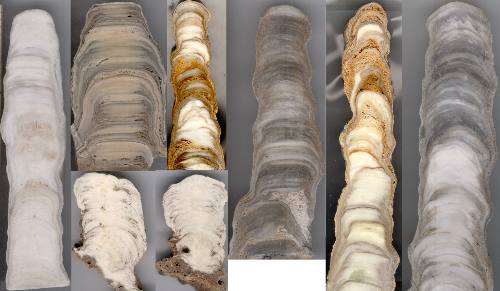

This project is funded by a Leverhulme Research Project grant, and aims to understand interactions that may have occurred between ancient societies and their environments. The project focuses on the Ancient Maya civilization, a Mesoamerican civilization noted for its highly developed writing system, art, mathematics, and monumental architecture. During the Classic Period (ca. 250 to 900 A.D.), the Maya civilization flourished, developing many city-states linked by a complex trade network. This terminated however between ~800 and 1000 A.D., when a widespread political collapse occurred in the central Maya region. We aim to reconstruct the climate and environmental changes that occurred in this area at sub-decadal resolution with exceptional age precision using an array of paleoclimate proxies, in order to understand environmental changes the Mayans interacted with from the Preclassic through the Postclassic periods.
Project PI Prof. David Hodell has collected a large assortment of speleothem samples from caves across the Yucatán peninsula, interspersed amongst a large number of important Classic Maya sites, with the initial field work funded by the National Geographic Society. Notably, four speleothems were obtained from a cave system directly underlying a Postclassic site.
Our research team is applying conventional and novel techniques for dating the stalagmites and extracting quantitative paleoclimate information contained in the stalagmite chemistry. This includes optimized U/Th dating in collaboration with the Oxford Earth Sciences geochemistry facilities, replication of oxygen and carbon stable isotope records using multiple stalagmites within the same cave system and across multiple cave systems, employing less common karst hydrologic proxies such as trace elements and calcium isotopes to strengthen interpretations, and sampling of specific periods at ultra-high spatial resolution within the calcite using secondary ion mass spectrometry (University of Wisconsin-Madison SIMS lab) and synchrotron radiation micro X-ray fluorescence (SR-μXRF).
Our group is collaborating with archaeologists who specialize on specific sites in NW Yucatán to interpret the possible significance of the speleothem palaeoclimate information for Maya cultural change on a local level.

Fig. 1. Collection of Yucatán stalagmites with growth during the Mayan civilization

Fig. 2. Entrance to cave directly underlying a Postclassic site in which stalagmites were sampled



